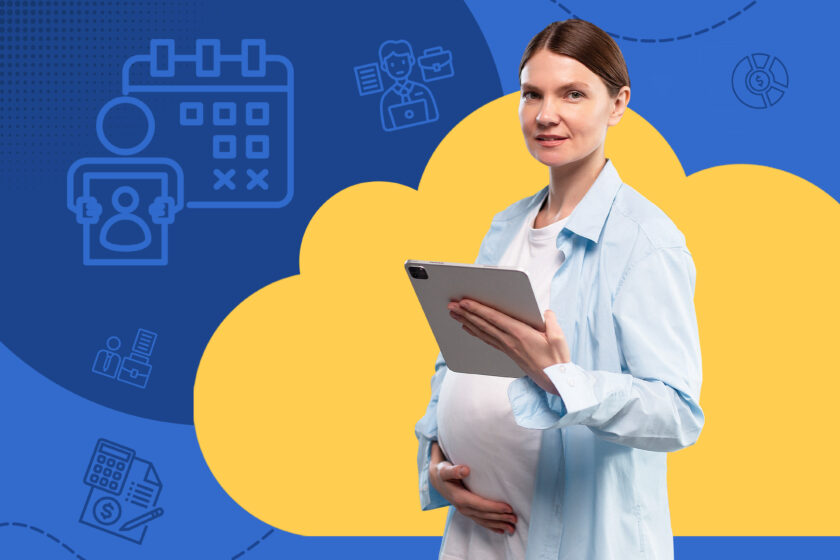Introduction: Working Mothers Deserve Clear Information and Support
Having a baby marks a huge life change — and often raises big questions about maternity leave, pay, and workplace rights.
If you work as a mother or in HR in Singapore, you need to understand the new MOM maternity leave policy (2025). As HR goes digital changing how we track and manage benefits, this guide answers the 7 questions people ask most about maternity leave in Singapore — so you can plan with confidence and follow the rules.
In Singapore working mothers who qualify can get 16 weeks of paid maternity leave under the Ministry of Manpower’s 2025 policy.
1. How Much Maternity Leave Am I Entitled To in 2025?
The MOM maternity leave policy gives eligible working mothers 16 weeks of paid maternity leave.
You qualify if:
- You have a legal marriage to the child’s father.
- Your child holds Singapore citizenship.
- You have worked for your employer for at least 3 months without a break before giving birth.
You can take your leave all at once or spread it out around your due date to support care before and after birth.
2. Who Pays for Maternity Leave?
Employers and the Singapore Government share the cost of maternity leave pay:
| Period | Who Pays | Notes |
| First 8 weeks | Employer | Fully paid by the employer |
| Last 8 weeks | Government | Reimbursed via Government-Paid Leave (GPL) Portal, capped at S$10,000 per 4-week block |
Employers need to file reimbursement claims by the deadline via the GPL Portal. Info-Tech’s HRMS Software takes care of all claims and calculations eliminating errors.
Singapore employers cover the first 8 weeks of maternity leave; the Government pays back the next 8 weeks (up to $10,000 per block).
3. Can Maternity Leave Be Split Into Blocks?
Yes. Maternity leave lasts 16 weeks without breaks, but moms who qualify can push back up to 4 weeks of leave to use within a year after giving birth — if their boss agrees.
This option helps new moms better juggle recovery getting back to work, and taking care of their baby.
HR Tip: A Leave Management System keeps track of postponed and used leave days , gets them approved, and makes sure they show up in paychecks.
4. What If the Baby Is Not a Singapore Citizen?
If your child doesn’t have Singapore citizenship, you get 12 weeks of maternity leave, which your employer pays for,
This rule applies to:
- People from other countries working in Singapore.
- Long-term residents whose kids aren’t citizens.
- Single moms (in certain situations).
Make sure to check the Ministry of Manpower (MOM) website for the latest rules and talk to HR — your citizenship affects how long you can take leave and if you’ll get paid back.
5. Can They Fire You When You’re Pregnant?
No. Singapore has strong laws to protect pregnant workers.
The Employment Act says it’s against the law to fire a woman without a good reason if she’s been working for at least 3 months in a row and is pregnant.
This Covers:
- Firing without warning or pay.
- Letting go because of pregnancy.
- Not giving maternity perks.
Bosses who break these rules might have to pay full maternity benefits and face legal trouble.
The Employment Act protects pregnant workers from unfair dismissal and guarantees them full maternity perks.
6. Can Part-Time or Contract Workers Get This?
Yes. Maternity leave applies to part-time, contract, and temp workers if they:
- Have put in at least 3 months straight before having a baby.
- Fall under the Employment Act or Child Development Co-Savings Act.
Entitlements might be pro-rated based on work hours, but unfair dismissal protection remains.
Employers need to make sure contracts are clear and use software like Info-Tech’s Payroll Software to figure out pro-rated entitlements .
7. How Should Employers Keep Track of and Okay Maternity Leave?
Tracking by hand can lead to missed paybacks and mistakes in following rules. To make sure records are right and follow MOM rules, companies should switch to digital leave management.
Tool Tip: With Info-Tech’s Leave Management System
HR can:
- File government-paid leave claims .
- Keep tabs on used, postponed, and available maternity days.
- Keep digital records ready for audits.
- Create reports for MOM checks or internal purposes.
- This gives HR and employees clarity and reassurance.
Closing Thoughts:
Singapore’s 2025 maternity leave continues to back family support, gender fairness, and workplace inclusion. When companies and staff stay informed and use the right tools, maternity leave becomes more than just a perk — it builds a family-friendly, rule-following, and understanding workplace.
If you’re getting ready for parenthood or handling HR rules, the key is to know what’s what and to automate.
Check out Info-Tech’s HRMS Software & Leave Management Software now — it makes tracking maternity leave easier while backing your team during their big life events.
Frequently Asked Questions:
How many weeks of maternity leave are there in Singapore (2025)?
Working moms who qualify get 16 weeks of paid maternity leave if their baby is a Singapore citizen.
Who pays for maternity leave in Singapore?
Bosses cover the first 8 weeks; the Government pays back the other 8 weeks through the GPL Portal, with some limits.
Can maternity leave be split?
Yes. Mothers have the option to defer up to 4 weeks and use them within 12 months after giving birth as long as their employer agrees.
What if my baby is not a Singapore citizen?
Mothers of non-citizen children can take 12 weeks of maternity leave, with their employer covering the full pay.
Are part-time or contract workers eligible?
Yes, they qualify if they’ve been on the job for at least 3 months without a break and meet the requirements set by MOM.

